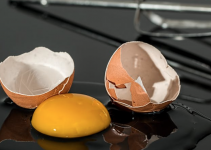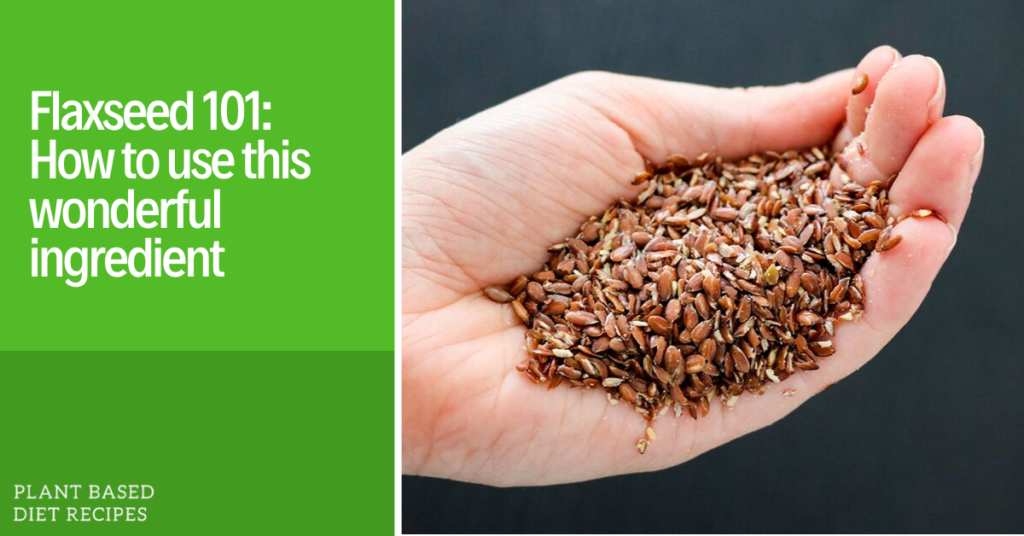
Hey and welcome!
I’m here today to tell you about a wonderful ingredient that you may have been missing from your diet.
You’ve probably heard of this superfood, as it has taken over the world of health and wellness the past couple of years. I’m talking about flaxseed.
Flaxseed has become a popular ingredient in plant-based and vegan recipes. It can be found in a lot of packaged foods, or perhaps you have a bag lying around in your cupboard.
Aside from its health benefits, this grain is more versatile than you might think.
Let’s explore further:
The Origin and Uses of Flaxseed
Flaxseed comes from the flax plant (otherwise known as Linum usitatissimum), which can grow as tall as two feet. It is believed to have been first grown in Egypt but is now grown all across the globe.
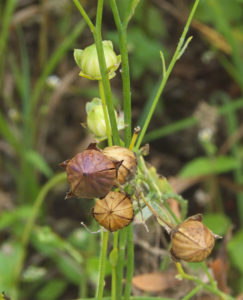
When it was first grown, flax was used to produce linen. And when the plant came to North America, it was grown exactly for that purpose – to make clothes. However, in the 20th century, cotton had taken over and, nowadays, most places that grow it do so for the seeds.
The seed is grown in large fields and thrives under full-sun in cooler climates. Once the seed pods get big, they’re harvested.
Types of Flaxseeds
There are two types of flax seeds, brown and golden. Canada supplies the largest quantity of brown flax seeds, whereas the rest of North America grows the golden type. Most people find the brown seeds have a stronger flavor than the golden ones. Both types are excellent sources of alpha-linolenic acid (ALA), but the brown variety is higher in ALA than the golden one.
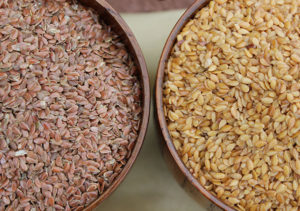
How it Can Help You
If you plan to try flaxseeds, you should know they can’t be fully digested by your body. They must be ground up before eating. The easiest way to do it is by using a coffee grinder. If you don’t want to do that, you can save a step and buy them already ground.
As mentioned earlier, flaxseeds are emerging as a superfood as researchers are discovering more health benefits associated with them. Here are the top three benefits we know of so far:
- Rich in Fiber: One of the well-known benefits of flaxseed is that it has high levels of mucilage gum content, which is a gel-forming fiber that is water-soluble and moves through your intestines undigested. Once consumed, it prevents food in your gut from emptying fast, which can help keep you feeling full. Thus, if you consume two tablespoons of flaxseed a day, it will give you over 10 percent of your recommended minimum daily fiber.
- High in Omega-3 Fatty Acids: We know now that flaxseeds contain a type of omega-3s called, ALA, and you should probably also know that our bodies react differently to these than it does to EPA/DHA (i.e. animal products). Who am I kidding – we knew that!! ALA can help prevent heart disease and hypertension, improve platelet function, and reduce inflammation.
- Lowers Cholesterol: A study by Nutrition and Metabolism found that incorporating flaxseed into your diet can help reduce cholesterol by increasing the amount of fat excreted through your digestive system. The soluble fiber of flaxseed can trap fat and cholesterol in the digestive system, so it can’t be absorbed. As well, soluble flax fiber can trap bile, which produces cholesterol in your gallbladder. With this, the bile is released through the digestive tract, causing your body to make more and releasing excess cholesterol – which lowers it.
Flaxseed in The Kitchen
These tiny seeds are perfect for cooking and baking. And if you sneak an extra cookie or two in, you’ll feel less guilty about it! So start incorporating flax seeds in your own diet – here are some recipes for you to try (plant-based friendly, of course!):
- Ripe bananas aren’t just for making bread – you can also use them in cookies! These banana oat cookies are delicious and simple to make. And the best part is that they’re vegan and gluten-free.
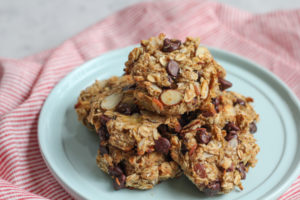
- Nothing beats a good blueberry muffin! These muffins are perfect to grab as a snack while you’re on the run. They’re naturally sweetened, gluten-free, and vegan! And you can freeze them.
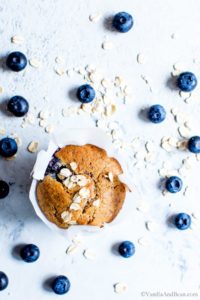
Easy Crunchy Flaxseed Crackers
- Once you make these crackers, you won’t need to keep buying the grocery store version. They’re gluten, dairy, sugar, and egg-free – so they’re also vegan-friendly. And they involve only three ingredients.
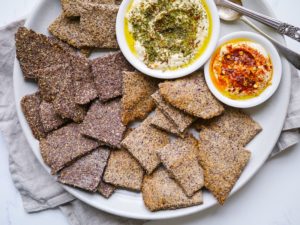
Tropical Green Flaxseed Smoothie
- If you’re looking to get more fruits and veggies into your diet, this smoothie is perfect. And while it might be easier to visit a smoothie shop, not all smoothies are made with the best ingredients; not to mention, they can be expensive. In this drink, the added flaxseed blends perfectly without affecting the taste or texture.
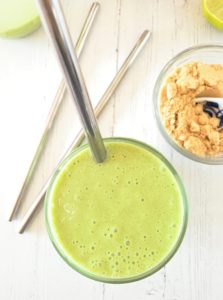
It’s fun to discover and learn about healthy things to incorporate into your diet! As somebody who regularly uses flaxseed, I love the different ways you can use it for baking or cooking!
What’s your favorite thing to make with flaxseed? I’d love to hear your tips.
P.S. if you are looking for protein-packed meal options to accompany the fiber, download our FREE Plant Based Guide for Gainz

